
Several million years ago, the first animals moved from the sea to colonize the land. Eventually, worldwide changes in climate and geography convinced some of the mammals to move back to the sea. These animals have since evolved to be perfectly adapted to their environment. Most of these animals comprise a group known as the cetaceans, which includes the dolphins and whales. The other main group of marine mammals falls into the family of pinnipeds, which includes the seals and sea lions. Breathing air and then diving, cetaceans can hold their breath for unimaginable lengths of time. They are peaceful animals, and they are quite intelligent. Some of the largest brains in the world of mammals are found in the oceans. These animals have exhibited remarkable abilities to communicate and learn. Their natural lives are spent in close family groups caring for their young and each other. Their songs can be heard echoing for miles beneath the waves. It is shameful to think that mankind hunted most of these magnificent animals to the brink of extinction. But today, under the protection of most of the world's governments, they are coming back. In marine parks around the world, their ambassadors are helping to save their kind by helping us to better understand them. Below is a listing of some of the world's more familiar marine mammals.
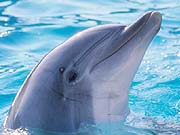
The bottlenose dolphin is perhaps the most familiar of the sea mammals. Their gentle nature has endeared them in our hearts. These highly social animals have actually been known to rescue humans from danger. They are intelligent creatures with a brain size similar to ours. Some scientists believe they are capable of complex communication skills.
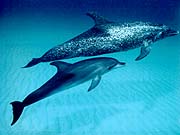
The Atlantic spotted dolphin looks very similar to the bottlenose dolphin except for the noticeable body spots. They are generally somewhat smaller than their cousins. As with all dolphins they travel in close family groups called pods.
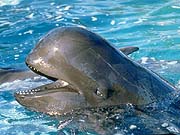
The pilot whale is a small member of the whale family, averaging about 10 feet in length. They are perhaps better known for the mass strandings in which entire pods of these animals will beach themselves in an apparent attempt at suicide. This behavior has yet to be explained.
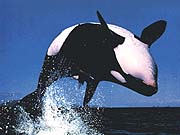
The killer whale of Shamu and "Free Willy" fame is a highly intelligent and very sociable animal. It is a standard attraction at most marine parks. Pods of Orcas have been known to work together when hunting for food. They will even temporarily beach themselves to catch one of their favorite foods - the sea lion.
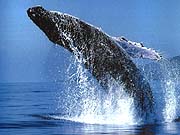
The humpback whale is a large animal, growing to 60 feet in length. These magnificent animals were one hunted to the brink of extinction, but are now starting to make a comeback. They feed on plankton, and are perhaps best known for their enchanting song, which can be heard for hundreds of miles under the sea.
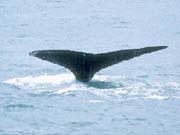
Gray whales are among the best known large whales. They can frequently seen swimming along the shores of the western states. Long endangered, these animals are just starting to recover from excessive hunting. They grow to 50 feet and are often seen covered with patches of barnacles.
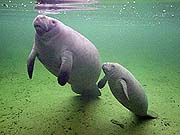
Manatees are graceful and peaceful creatures. They feed on water plants, and inhabit the waterways and shores of Florida. Other species are found in the Indian Ocean and the Gulf of Mexico. They are slow creatures, and are in danger of extinction due to careless boaters. Most manatees can be seen with boat motor scars on their backs.
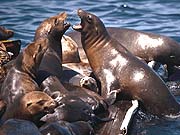
Sea lions are probably the best-known members of the pinniped family. They inhabit the western coast of the United States and Canada. These animals are clumsy on land, but underwater their graceful ballets can reach speeds of 25 mph. They can dive to over 1000 feet, where they feed primarily on fish and squid.
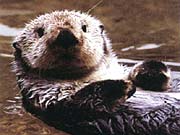
These adorable animals were once hunted to the brink of extinction for their fur. Inhabiting the coastal waters of the western United States, they are now protected and are making a comeback. They are often seen lying on their backs eating their favorite food - crustaceans.
Sponges & Sea Squirts | Corals & Anemones | Sea Worms | Echinoderms
Crustaceans | Mollusks | Coral Reef Fishes | Unusual Reef Fishes
Sharks & Rays | Marine Reptiles | Marine Mammals